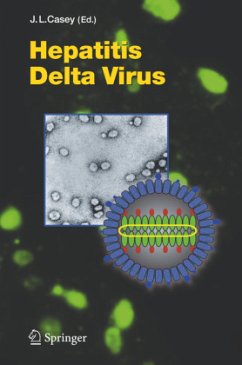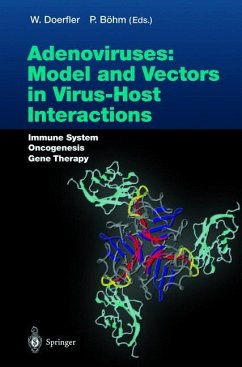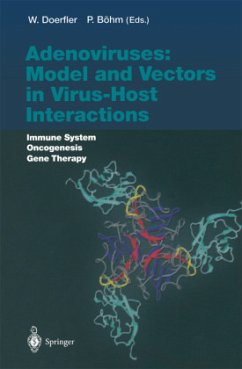
Transforming Proteins of DNA Tumor Viruses
Versandkostenfrei!
Versandfertig in 1-2 Wochen
77,99 €
inkl. MwSt.

PAYBACK Punkte
39 °P sammeln!
It is surprising, and even disappointing, that there have been very few meetings and published volumes resulting from these meetings that focus attention upon all of the groups of DNA tumor viruses. Historically, separate meetings were held each year for the adenovirus-SV40-polyoma researchers, the herpes viruses, hepatitis B virus and the papillomaviruses. It was as if these four virus groups were four fields of study developing independently with a literature and culture of their own. When a virologist crossed the field from the adenovirus group to the herpesvirus or papillomaviruses, he or ...
It is surprising, and even disappointing, that there have been very few meetings and published volumes resulting from these meetings that focus attention upon all of the groups of DNA tumor viruses. Historically, separate meetings were held each year for the adenovirus-SV40-polyoma researchers, the herpes viruses, hepatitis B virus and the papillomaviruses. It was as if these four virus groups were four fields of study developing independently with a literature and culture of their own. When a virologist crossed the field from the adenovirus group to the herpesvirus or papillomaviruses, he or she was lost to their former group because of the structure of separate meetings and remote literature. This, of course, has resulted from historical accident and is being rectified by the rapid progress made in our understanding of how these viruses contribute to the causation of cancer in animals and humans. It was pre cisely because of these factors that it was time to hold a meeting and publish its proceedings on the subject of transforming proteins of DNA tumor viruses. For the first time, DNA tumor viruses were defined as all of the virus groups that can contribute to cancer in animals with the exception, unfortunately, of the . poxviruses. The purpose of the meeting was to bring together scientists who rarely attend meetings together but actually work on the same problems with different viruses.












